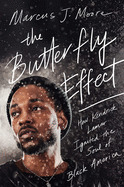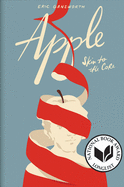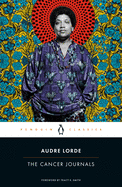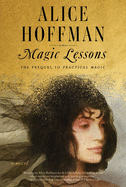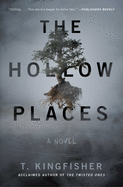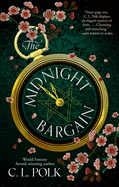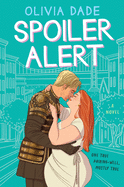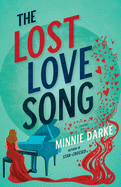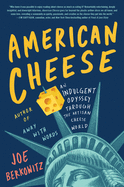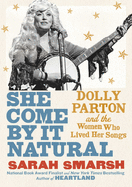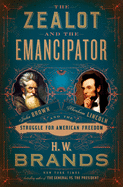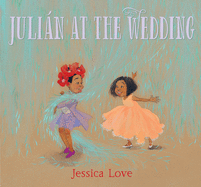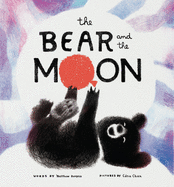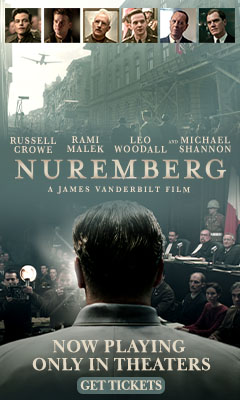Friday, October 16, 2020
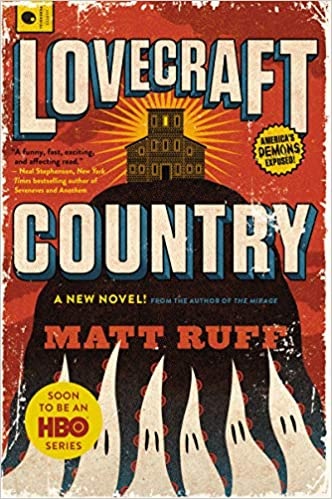 As readers, we sometimes have the complicated task of loving stories that disappoint us. Early on in the wildly imaginative Lovecraft Country, both the novel by Matt Ruff (Harper Perennial, $16.99) and the HBO adaptation, comes the observation, "Stories are like people.... Loving them doesn't make them perfect. You try to cherish their virtues and overlook their flaws. The flaws are still there, though.... Sometimes, they stab me in the heart."
As readers, we sometimes have the complicated task of loving stories that disappoint us. Early on in the wildly imaginative Lovecraft Country, both the novel by Matt Ruff (Harper Perennial, $16.99) and the HBO adaptation, comes the observation, "Stories are like people.... Loving them doesn't make them perfect. You try to cherish their virtues and overlook their flaws. The flaws are still there, though.... Sometimes, they stab me in the heart."
 H.P. Lovecraft's racism is no secret, and it falls under sharp critique in the gleefully irreverent I Am Providence by Nick Mamatas (Night Shade, $15.95). The hilarious murder mystery set at a Lovecraft convention holds nothing back as it grapples with the racism, misogyny and overzealous fan cultures that persist in literature. But the wounds it exposes are deep: "I kept reading Lovecraft, but at a distance," the narrator says. "I was one of the bad people in his work, who terrified the good people just by existing."
H.P. Lovecraft's racism is no secret, and it falls under sharp critique in the gleefully irreverent I Am Providence by Nick Mamatas (Night Shade, $15.95). The hilarious murder mystery set at a Lovecraft convention holds nothing back as it grapples with the racism, misogyny and overzealous fan cultures that persist in literature. But the wounds it exposes are deep: "I kept reading Lovecraft, but at a distance," the narrator says. "I was one of the bad people in his work, who terrified the good people just by existing."
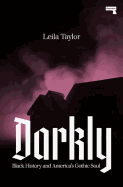 Leila Taylor presses those ideas further in her elegant work of literary criticism Darkly: Blackness and America's Gothic Soul (Repeater, $14.95). An admitted fan of Edgar Allan Poe's work, Taylor is not unaware of what he might think of her Blackness. "He doesn't have H.P. Lovecraft's blatant xenophobia," she writes, "but a more liquid unease wrought with guilt which seems more appropriate for American horror. Poe's anxiety is an American anxiety, wary of... the Blackness we brought to our shores and the darkness we fostered." This context is made especially compelling when Taylor goes on to assess many of Poe's most famous stories as being about attempts "to get away with murder and the effort to deny it."
Leila Taylor presses those ideas further in her elegant work of literary criticism Darkly: Blackness and America's Gothic Soul (Repeater, $14.95). An admitted fan of Edgar Allan Poe's work, Taylor is not unaware of what he might think of her Blackness. "He doesn't have H.P. Lovecraft's blatant xenophobia," she writes, "but a more liquid unease wrought with guilt which seems more appropriate for American horror. Poe's anxiety is an American anxiety, wary of... the Blackness we brought to our shores and the darkness we fostered." This context is made especially compelling when Taylor goes on to assess many of Poe's most famous stories as being about attempts "to get away with murder and the effort to deny it."
It's hard to let go of writing that, for whatever reason, grips us. I deeply admire readers like this, who, as James Baldwin said about his love for America, love flawed stories enough to criticize them perpetually. --Dave Wheeler, associate editor, Shelf Awareness
Magic Lessons
by Alice Hoffman
A matriarch of American witchcraft is fully realized in Magic Lessons, Alice Hoffman's prequel to her 1995 novel, Practical Magic. In 2017, The Rules of Magic expanded her descendants' modern-day stories, and now readers learn the roots of the sorcery, passed from mothers to daughters for centuries.
Hoffman's sympathetic telling of Maria Owens's 17th-century life is enchanting, although her journey includes the intolerance endured by many settlers--none more brutal than in Maria's first American home of Salem, Mass. Maria is a survivor. Abandoned at birth, she learns the "Nameless Arts" from her adoptive mother, Hannah. Horribly, Hannah is burned as a witch, and Maria is sent from England to Curaçao in 1680 as an indentured servant. She swears to avoid love, but no charms or teas prevent romance, or the arrival of baby Faith. Determined to find John Hathorne, the seductive merchant who fathered her daughter, Maria's healing skills earn her passage to Massachusetts. In Salem, Hathorne shuns her, but mother and daughter live tenuously under the Puritans' judgmental glares, while women surreptitiously buy her potions.
A tale of witchcraft, romance and empowerment, Magic Lessons is also a thoughtful perspective on American history. Maria and Faith settle in more open-minded Manhattan, escaping Salem's persecution in the name of religion. Even though teenage Faith explores the "dark arts," Maria holds her positive maxim: "You receive what you give threefold." Instrumental in the 1693 outlawing of witchcraft trials, she's rewarded in an unlikely happy ending--with "a man who did not believe that love could ever be a curse." --Cheryl McKeon, Book House of Stuyvesant Plaza, Albany, N.Y.
Discover: In the satisfying third volume of Alice Hoffman's Magic series, Maria Owens arrives in Salem and begins the dynasty of American Owens women skilled in the "Nameless Arts."
Mystery & Thriller
The Hollow Places
by T. Kingfisher
An eccentric small-town museum hosts a portal to a twisted, lethal realm of the multiverse in this hilarious and deliciously shiver-inducing horror story by T. Kingfisher (The Twisted Ones).
When Kara finds herself newly divorced and "at thirty-four, staring down the barrel of moving back in with my parents," her chronically strange but much-loved Uncle Earl invites her to stay with him at the Glory to God Museum of Natural Wonders, Curiosities and Taxidermy in tiny Hog Chapel, N.C. Kara accepts, happy both to avoid her mother and catalogue the museum's whimsical collection of albino raccoons, assorted junk and a "Genuine Feejee Mermaid." While babysitting the museum during Earl's knee surgery, Kara and her friend Simon discover a portal to an eerie world where extradimensional beings stalk through malevolent willow trees, waiting for a meal to blunder through one of dozens of doors. Lost in the nightmare realm, the question becomes not only whether Kara and Simon can find their door again, but what might follow them home.
Told in Kara's down-to-earth, wisecracking voice, this spooky romp combines Lovecraftian horror with real-world woes, the willow universe's many doors echoing the possibilities and danger that come with starting over. Kingfisher builds a sense of oppressive dread in the second half that she dispels with a finale filled with cathartic action and the best reanimated taxidermy subjects since Night at the Museum. Witty, frequently terrifying and downright oddball, The Hollow Places is pure, brilliantly imaginative fun. --Jaclyn Fulwood, blogger at Infinite Reads
Discover: A divorcée moves into her uncle's small-town museum and discovers a way into a nightmarish other world in this hilarious, frightening portal story.
Science Fiction & Fantasy
The Midnight Bargain
by C.L. Polk
In The Midnight Bargain, C.L. Polk (Witchmark) uses the imagined world of Chasland (a land "long on wealth and short on social progress") and classic tropes of many Regency romance novels to deliver a timely message about social and gender justice. Beatrice Clayborn is the powerful eldest daughter of a noble family whose coffers have run dry. Her magic runs deep and strong, though it is valuable to her family only insofar as it can secure her a wealthy husband and produce for him magical heirs. Beatrice longs for something more than marriage to a man of her father's choosing, and has identified a powerful grimoire that can help her build the world she wants. Her pursuit of the book leads her to an unexpected friendship with another sorceress--and a burgeoning love for her new friend's brother.
Over the course of The Midnight Bargain, Beatrice comes into her power--of both the magical and metaphorical varieties--forcing those around her to face uncomfortable truths about the status quo, who it benefits and at what cost. "The current system lays all of the restriction, all the responsibility, and all of the burden on sorceresses," she explains. "For [men], the system isn't broken, so why look for a solution?" This struggle to find a resolution that lessens the patriarchal burden placed on women's shoulders feels as relevant in the real world as it does in Polk's expertly imagined one. The Midnight Bargain is a feminist fantasy novel that is both charming and important, further cementing Polk's place as a powerful voice in the genre whose work exposes the broken systems in the real world. --Kerry McHugh, blogger at Entomology of a Bookworm
Discover: This feminist fantasy novel uses classic romance tropes to deliver a timely message on social and gender justice.
Romance
Spoiler Alert
by Olivia Dade
Readers don't need to write fan fiction or love high-fantasy television epics like Game of Thrones to fall for Olivia Dade's witty and swoon-worthy Spoiler Alert, but anyone who does will find a special sort of joy in this romance.
By day, the public loves Marcus as a handsome, somewhat dim celebrity, but by night Marcus secretly writes the version of Gods of the Gate he wishes existed. Geologist April, cofounder of the fan fiction server they started together, is one of the few people who knows the real Marcus--except they've always kept to screennames. They've been friends for years, but when Marcus--as himself--asks April on a date in what people assume is a publicity stunt, their fan fiction partnership becomes something more--only April doesn't know the whole story. The secret identity trope is common, but Marcus has a good reason for lying to April: if his hobby is exposed, his career will be over.
April may receive criticism for her plus-size cosplay, but Dade's body- and fat-positive writing and characters are both warm and revolutionary. Likewise, Marcus is dyslexic, and Dade gives him an empowering, validating story arc.
Spoiler Alert is told in alternating point-of-view chapters plus snippets of fan fiction, direct messages and short (often terrible) bits of script from Marcus's acting roles. This structure immerses readers in the romance between April and Marcus and the show they love. Spoiler Alert is at turns warm, hot and funny, making it perfect for any romance fan. --Suzanne Krohn, editor, Love in Panels
Discover: Spoiler Alert is a love letter to fan fiction, romance and finding people who love you just as you are.
The Lost Love Song
by Minnie Darke
With her second novel, The Lost Love Song, Darke (Star Crossed) composes a complex and entertaining story of lives that interweave in surprising ways. This time, instead of astrology, Darke's unifying device is a song, whose journey winds across the world, from Australia to Singapore to London to Vancouver. Begun by concert pianist Diana Clare as a tribute to the man she loves, the song takes a number of unexpected turns before eventually finding its way home.
Back in Melbourne to teach master classes after a world tour, Diana surprises Arie, the tech support guy, by asking him to lunch. Seven years later, the couple is firmly ensconced in the house of Diana's dreams, with a bay window for her Steinway grand. There's just one problem: Arie proposed--four and a half years ago--and Diana still isn't sure she wants to be married.
On the eve of another world tour, Diana jots down most of the love song, though it's missing an ending. When tragedy strikes one of her flights, Arie is left feeling that their story, and his life, also lacks resolution. But the song is only beginning its journey. Darke crafts an inventive tale of vivid characters who connect with the song: the widower who picks up Diana's notebook in a Singapore hotel, the lovestruck teenagers who perform the song as a duet, a Canadian banjo player in search of inspiration.
Clever, warm-hearted and a touch bittersweet, with an ending as satisfying as the plagal cadence Diana loves, The Lost Love Song will have readers hoping for all of Darke's characters to find true happiness. --Katie Noah Gibson, blogger at Cakes, Tea and Dreams
Discover: Minnie Darke's inventive second novel follows the international journey of a love song and the people connected to it.
Food & Wine
American Cheese: An Indulgent Odyssey Through the Artisan Cheese World
by Joe Berkowitz
Whether readers answer the siren call of the cheese plate at a holiday party or travel to a specialty shop to hunt for something artisanal, they'll savor Joe Berkowitz's American Cheese.
Though books that dive deeply into specialized food worlds can sometimes feel pretentious or exclusionary, Berkowitz (Away with Words) is self-aware and self-deprecating enough to make this a funny, engaging piece of nonfiction for new gourmet cheese fanciers. As he recounts his journey from the grocery store to cheese-mongering competitions, Berkowitz writes not only about varieties of cheese, but the history of cheese worldwide and in the United States in particular. He talks about the impact of diet on the milk produced by cows, goats and sheep and on the final cheese. Most of all, he explores the process of making cheese, buying and selling it and enjoying it.
Because of the humor and joy with which Berkowitz talks about his "cheese odyssey," readers get swept up along with him. For example, when he attends a cheese-making course, he notes why no one signed up for the burrata class: "Poorly made burrata tastes like mushy, salty Silly Putty that is crying milky tears."
Accessible to readers inside or outside of the artisan cheese world, American Cheese is a delicious trip through the cheese landscape--one that may necessitate keeping a snack plate nearby. --Suzanne Krohn, editor, Love in Panels
Discover: Funny and fascinating, American Cheese recounts one man's joyful education about and enjoyment of one of the oldest foods in the world.
Biography & Memoir
She Come by It Natural: Dolly Parton and the Women Who Lived Her Songs
by Sarah Smarsh
Dolly Parton is an indisputable American cultural icon: instantly recognizable, much derided and (perhaps paradoxically) deeply respected. But there's more to Parton--both the musician and the woman--than rhinestones, outsize boobs and Southern twang. In her second nonfiction book, She Come by It Natural, journalist and lifelong Parton fan Sarah Smarsh (Heartland) delves into Parton's roots, her long career, her business empire and the smart but subtle feminism that has won Parton such legions of fans.
Originally published in roots-music magazine No Depression as a four-part serial, Smarsh's exploration traces the arc of Parton's career from the cheerful "girl singer" performing alongside Porter Wagoner to a big-time headliner in charge of her own contracts, copyrights and destiny. Smarsh, a native of rural Kansas, shares her early memories of listening to Parton's music (and that of similar strong women) in the car with her mother and grandmother, the music resonating across all three generations. She discusses how Parton's music has always championed the working-class woman whose struggles are largely invisible. Her songs have become anthems for listeners who never studied feminist theory but who will stand up to any force, male or economic, that threatens their livelihood and their self-respect.
Along the way, Smarsh examines the criticism--both class- and gender-based--that Parton has received over her half-century in music. While it includes sharp social commentary and well-placed personal anecdotes, She Come by It Natural is at its heart a love letter both to Parton and to the women who continue to see themselves in her songs. --Katie Noah Gibson, blogger at Cakes, Tea and Dreams
Discover: Journalist Sarah Smarsh intimately examines the long career and feminist impact of beloved musical icon Dolly Parton.
The Butterfly Effect: How Kendrick Lamar Ignited the Soul of Black America
by Marcus J. Moore
In The Butterfly Effect: How Kendrick Lamar Ignited the Soul of Black America, veteran music journalist Marcus J. Moore sculpts a thoroughly engaging, enlightening portrait not just of celebrated rapper Kendrick Lamar's life and music--in particular his landmark album To Pimp a Butterfly--but more broadly of Lamar's indelible stamp on contemporary musical landscapes and popular culture.
Why Lamar? Why now? Moore explains, "Though he isn't done creating (as of this writing), there's no denying the grand impact he's had on music and black culture over the past decade. His story is worth celebrating, so why not give him flowers now?" The rapper has certainly earned many accolades already--his album DAMN. won the Pulitzer Prize for music; Barack Obama called Lamar's 2015 song "How Much a Dollar Cost" his favorite of the year, and invited Lamar to the White House; he's earned more than a dozen Grammys.
Culling from extensive research, interviews with musicians and industry insiders and previously published interviews with Lamar, Moore traces and contextualizes Lamar's youth in Compton, Calif., his evolving persona and his ascension to celebrity. Moore also explores the roles of peers and mentors throughout Lamar's life, describing in fascinating detail ways the titans of (especially West Coast) rap have influenced Lamar.
Ultimately, The Butterfly Effect is more than an interesting biography: it's an investigation into what art can encapsulate and what kinds of change it can effect. And as Moore himself skillfully demonstrates, Lamar's contribution is worth celebrating, worth study, worth the flowers now. --Katie Weed, freelance writer and reviewer
Discover: This vivid, deeply researched biography of Kendrick Lamar is rich with memorable details and commentary on the Pulitzer-winning rapper's life, art and cultural impact so far.
History
The Zealot and the Emancipator: John Brown, Abraham Lincoln, and the Struggle for American Freedom
by H.W. Brands
Brisk and vivid, The Zealot and the Emancipator traces the confluence of outrages, convictions and political calculations it took for the United States to at last strike down the institution of slavery. Quoting at engaging length from letters, speeches and news reports, H.W. Brands (Heirs of the Founders; Andrew Jackson: His Life and Times) places special emphasis on the minds and actions of John Brown, the murdering abolitionist, and Abraham Lincoln, the murdered president. Much of Brands's account comes from the words of those who knew his subjects.
Brands's chatty retelling follows Brown and Lincoln through the buildup to the Civil War, recounting events like the collapse of Lincoln's Whig party and the maneuvering behind the Kansas-Nebraska Act in clear, exciting prose. The book's title suggests a simple dichotomy, a radical's and a moderate's approach to enacting just change, but Brands is attentive throughout to the thoughts of other Americans. Frederick Douglass, for example, was routinely disappointed in Lincoln's moderation, and George Kimball, an early volunteer for the Union army, called his compatriots in the Second Massachusetts Infantry Battalion "a light-hearted, whole-souled set of fellows."
One of the book's chief pleasures, besides the illumination of Lincoln's year-to-year thinking about slavery and Black Americans, comes from the observations offered by both men's contemporaries' descriptions: the reporter James Redpath, on assignment for the anti-slavery New York Tribune, wrote of a meeting with Brown, "I had seen the predestined leader of the second, and holier American revolution." And that endorsement came well after Brown's band had dragged five pro-slavery men from their bed and murdered them in Pottawatomie, Kan. --Alan Scherstuhl, freelance writer and editor
Discover: To show what it took to end slavery, a historian showcases John Brown and Abraham Lincoln in the words of those who knew them.
Health & Medicine
The Cancer Journals
by Audre Lorde
One imagines that Audre Lorde, the self-described Black lesbian feminist poet, who died of cancer in 1992, would have been gratified that her 1980 book, The Cancer Journals, has been reissued 40 years later. Making its republication bittersweet is the fact that the issues she was sounding the alarm about--the harm done to women by businesses built on body-shaming, and the insufficiently explored link between environmental decay and cancer--are still in dire need of attention.
The Cancer Journals--three prose pieces scattered with Lorde's journal entries--recounts her experience with breast cancer when she was in her mid-40s and living with her partner in Brooklyn, N.Y. After some deliberation following her diagnosis, Lorde went ahead with a mastectomy, but she was always clear that, despite pressure from the medical community, she would not wear a prosthesis: "I refuse to hide my body simply because it might make a woman-phobic world more comfortable."
Lorde enjoins readers to temper their fear, as she did during her cancer battle, and harness their rage for the greater good; "When I dare to be powerful, to use my strength in the service of my vision," she writes, "then it becomes less important whether or not I am unafraid." Lorde didn't live to see Black Lives Matter, #MeToo, the mainstreamed environmental movement, or the embrace of the term "intersectionality," which she seemed to anticipate with her multi-hyphenate identity, but it's tempting to conclude that her words--in The Cancer Journals and elsewhere--summoned them into being. --Nell Beram, author and freelance writer
Discover: This reprint of the self-described Black lesbian feminist poet's seminal work from 1980 reads like a harbinger of #MeToo, body positivity and other social movements.
Children's & Young Adult
Apple (Skin to the Core)
by Eric Gansworth
"Apple" is a slur commonly used to denote an Indigenous person who is "red on the outside, white on the inside." But words are only as powerful as people allow them to be. Writing in a striking combination of verse and prose, Eric Gansworth (If I Ever Get Out of Here; Extra Indians) intends to take back the power of "apple" in this NBA long-listed title.
Narrating his life experiences, Gansworth reveals the heartbreaking struggle of a family--11 people living in a three-bedroom house--with too little to eat and a mostly absent father whose every attempt to get ahead is undermined by structural racism. Gansworth takes his readers through a tumultuous existence filled with government abuse and poverty, as well as wonder and discovery. He writes about the boarding school his grandparents attended, the effects of which seeped down into future generations. Efforts to rob "Indians" of their identity make their offspring even more determined to protect it, piecing together the fragments and finding missing segments. "A primary lesson we are taught... we must clear our eyes, our ears, our throats to do our parts in carrying on the stories for the time we will no longer be able to pass them on." With Apple, Gansworth is doing just that for the Onondaga Nation.
The exceptional elements of this memoir abound. Gansworth's own art adds dimension to an already evocative narrative. His black-and-white illustrations and personal photos feature his family as well as significant apple imagery. His use of the Beatles lyrics, song titles, jacket imagery and especially their Abbey Road album (from Apple Records), aids in developing both the format and pacing of his story. With dramatic textual imagery, nuanced storytelling and evocative illustrations, Apple is a stirring depiction of Indigenous life. --Jen Forbus, freelancer
Discover: An Onondaga writer and visual artist does his part to carry on the family stories through a brilliantly moving combination of verse, prose and illustration.
Julián at the Wedding
by Jessica Love
Introduced in author/illustrator Jessica Love's 2018 Julián Is a Mermaid, self-expressive Julián returns in Julián at the Wedding, this time with a fabulous partner-in-play, Marisol. Repeating her memorably affecting formula of minimal text/maximum art, Love again offers another sparkling gift to young audiences.
Julián and his grandmother are back, making a stupendous entrance parading down a sidewalk side-by-side. Sartorially magnificent, the resplendent duo are clearly heading to a special event. They arrive at their destination on the title page, cleverly revealing the titular wedding as Julián and Abuela break the fourth wall to share their excited anticipation with readers. They're greeted by Marisol in a peach, fluffy gown (jauntily accessorized with a backwards periwinkle baseball cap) and her own grandmother in geometric finery.
Julián is bedecked with a magenta corsage and Marisol's hat has been replaced with a crown of red anemones. When they meet the gorgeous brides, Marisol is handed a basket of petals and Julián is given the cerulean-ribbon leash of the lovebirds' dog, Gloria. While the older guests enjoy the splendid reception that follows, Julián and Marisol have other plans. Under watchful grandmotherly gazes, the pair dash off to "a fairy house" of willow trees, where adventures abound. Wardrobe malfunctions prove inevitable for Marisol, whose rambunctious energy matches Gloria's. Julián, however, "has an idea," and inventively mixes-and-matches fitting attire.
Love's watercolor, gouache and ink illustrations feature explosive color and flowing lines. The art is enhanced by Love's exacting details that add breathtaking drama to the lively, inviting scenes. Once more, her near-wordless art adroitly and delightfully captures the transformative power of being seen: just as Abuela confirmed Julián's singular selfhood in Julián Is a Mermaid, Marisol gets her own affirmation here from her own grandmother. Love achieves another perfect union. --Terry Hong, Smithsonian BookDragon
Discover: Just as Abuela enabled Julián's fabulosity in Julián Is a Mermaid, his friend Marisol receives her own grandmotherly affirmation in this affecting sequel.
The Bear and the Moon
by Matthew Burgess, illus. by Cátia Chien
A young bear wakes from a long nap to be greeted with a surprise: "It was red as a berry and round like the moon with a long silver string drifting brightly in the breeze." What Matthew Burgess's adorable ursine hero does with the unexpected companionship becomes the charming narrative of The Bear and the Moon, which combines outdoor adventures with a poignant message about the lasting gift of friendship.
Every time the bear tries to catch his new playmate, he wobbles and tumbles in frustrated exhaustion. When the bear learns to walk and dance side-by-side, the pair energetically enjoy each other's company. The bear leads his friend on "a tour of his whereabouts"--his honey tree, his downhill slide, even "the spot where I sit on the pot." Suddenly, the "wonderful... squishable, huggable" friend bursts, leaving behind only a "red tatter dangling on the silver string." The bear despairs--"Bad, bad bear"--until the full moon rises and soothes with gentle reassurances.
In spare, inviting verse, professor/poet Burgess highlights the absorbing power of young friendship, emphasizing that time together is no measure for the depth of the bond. The bear's attachment here is undeniable; he readily recognizes this gift of a friend, making his loss-inspired self-recriminations potently affecting. The forgiveness nudged from above ushers peace and the permission to delight again in absorbing memories. Burgess finds an ideal collaborator in Brazilian artist Cátia Chien, who lives in New York City and whose mixed-media illustrations imbue every vibrantly swathed, expressive page with resonating emotive range. Using changing perspectives and evocative palettes, Chien clearly depicts the bear's every mood, beginning with discovery and delight and ending with mourning and (self) acceptance. --Terry Hong, Smithsonian BookDragon
Discover: A young bear's adventures with a surprising new friend might be brief, but their bond proves enduring even after sudden loss.
| Advertisement nuremberg--now playing in theaters |


